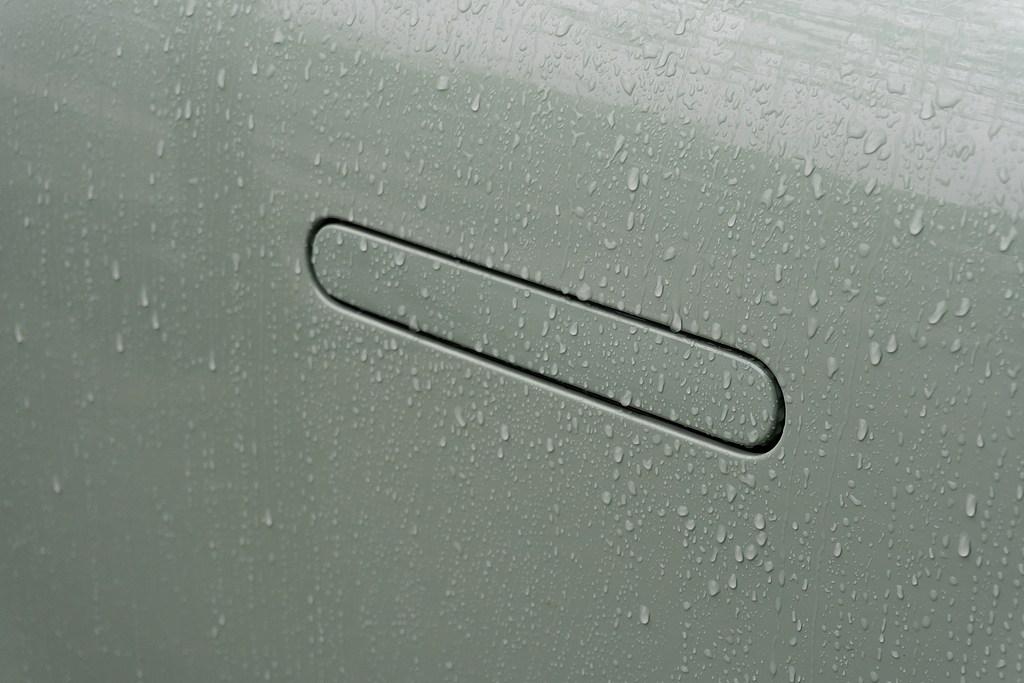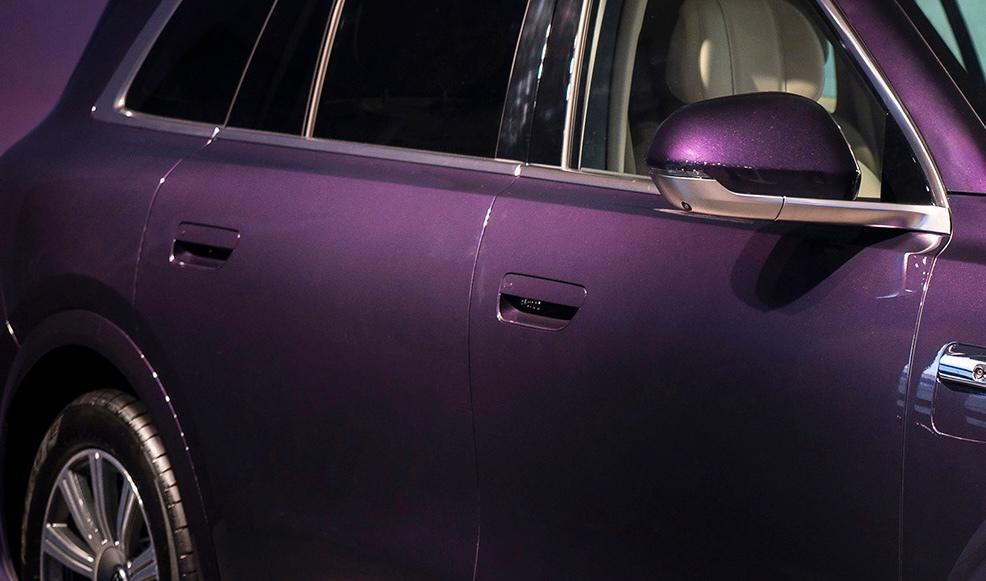Hidden Door Handles Are Set to Be Banned
In the eyes of consumers, hidden door handles have evolved from initially representing a "high-end feature" with a sense of technology to a "design flaw" that causes frustration in everyday vehicles.
The awkward fumbling when trying to find the door handle while taking a taxi, the bewilderment of elderly and children facing sensor-type handles in family cars, and the helpless frustration of northern car owners when door handles are frozen have all gradually worn down users' patience and goodwill towards innovative designs.
After a collision, door handles that fail to deploy directly trigger anxiety and concern among consumers: Why should we bear life risks for flashy but impractical designs?
After much anticipation, concealed door handles face regulatory adjustments.。
On September 24, the Ministry of Industry and Information Technology released a draft for public consultation on the mandatory national standard "Safety Technical Requirements for Automobile Door Handles." The new technical requirements specify new regulations regarding the shape, position, and safety requirements of both internal and external automobile door handles.

Fully concealed door handles require modification due to lack of hand operation space.
The most significant new requirement is that each door handle must provide hand operation space relative to the vehicle's surface in any state, and this operation space should not be less than 60mm × 20mm × 25mm.
This regulation means that 90% of the fully hidden door handles on the market will no longer be allowed. However, the semi-hidden door handles used in models like the Xiaomi SU7 and AITO M8 comply with the regulations and do not require any modifications.

Wenjie M8 semi-hidden door handle complies with new regulations.
Hidden door handles are currently one of the popular designs in new energy vehicles. In automakers' product planning, hidden door handles can not only reduce wind resistance and improve range but also enhance the technological attributes of the vehicle.
Not only do new energy brands like Tesla, Li Auto, and NIO adopt this type of design, but even traditional brands like Mercedes-Benz, BMW, and Volvo are using similar hidden designs in their new models.
However, consumers have long been troubled by hidden door handles.
In addition to the inconvenience of not being able to find or open the handle, there are safety concerns that worry many car owners, such as the risk of pinched fingers for the elderly and children, handles failing to pop out in icy or snowy weather, and handle failure in collisions hindering emergency rescue: Is it really necessary to sacrifice driving safety for a slight reduction in wind resistance?
The promotion of this new regulation is a direct response to these core concerns of consumers. It is also an important signal that the industry's development direction has shifted from "pursuing technology" back to "safety first."
Rectification of hidden door handles: Experience and safety.
The hidden door handles have always posed safety risks, and car manufacturers are working hard to address these safety and user experience issues.
Tesla once mentioned in the user manual that users could loosen the ice layer by pressing or tapping. Executive Tao Lin responded that turning on the air conditioning in advance to use warm air could melt the ice layer.
Domestic models adopt more redundant practices, including but not limited to equipping each car door with a separate redundant power supply, increasing the power and strength of the door handle motor, and adding a heating structure for the door handle.
However, this still does not completely solve the safety issue of hidden door handles.
According to the collision data from the China Insurance Automotive Safety Index (C-IASI), in side impact tests, vehicles equipped with electronic door handles had a door pop-out success rate of 67%, while those with mechanical door handles had a success rate of 98%.
Multiple automotive R&D personnel told 36Kr, "No car manufacturer can guarantee a 100% solution to the problem of hidden door handles not opening; they can only reduce the probability."In particular, in unpredictable collision accidents, car manufacturers cannot guarantee the absolute safety of all motors, wiring harnesses, and controllers.
In addition, the hidden door handles pose significant safety risks for the elderly and children. A representative from a new force brand car owner club told 36Kr, "Most of our group members are families with children, and almost half of the owners have encountered situations where children's fingers were caught in the door handles, and some even suffered fractures."
36Kr communicated with several new energy vehicle brand owners' clubs and found that the new regulations regarding car door handles have received support from many consumers. Some car owners even expressed the hope that, after the release of non-hidden door handle models, a paid handle replacement service could be offered for existing car owners.
Multiple researchers engaged in vehicle safety development have also expressed to 36 Kr that, from both the perspective of developers and users, they hope to see the return of traditional door handles.
New regulations impact global markets, with companies prioritizing safety in their research and development.
Once the new regulations come into effect, newly applied models will be required to meet all the new requirements by July 1, 2027, while models already in production must complete the necessary adjustments by July 1, 2028.
The rectification period required by regulations is not urgent. In the operating rules of the automotive industry, new cars typically undergo design changes during mid-cycle facelifts, which generally occur every 3-5 years, coinciding well with the regulatory rectification period.
"However, it is necessary to look at the freeze points in the R&D process," multiple industry R&D personnel told 36Kr. After the vehicle completes the R&D work, the design scheme will be frozen.The new regulations mean that some models will be redesigned, which may disrupt the research and production schedules of certain companies.
"However, the electric retractable handle can actually be set to lock in the popped-up position through a software program, which is the most cost-effective method," a researcher told 36Kr.
If the shape and position of the car door handle are redesigned, the die casting molds for the car door and the injection molds for the door interior will also need to be modified accordingly. After the design change of the car door, its structural strength will also change, and the vehicle may need to undergo side impact and related testing again.
A supply chain insider told 36 Krypton that the four doors of a vehicle correspond to four different die-casting molds. The manufacturing of molds not only requires material costs but also involves development fees, trial molding fees, and other related expenses. Depending on the weight and material, the cost of the four door molds ranges from 4 to 6 million yuan.
The impact of this new regulation may extend beyond the Chinese market.
Currently, models such as the Range Rover, Mercedes S-Class, and Maybach S-Class all feature fully concealed door handles. However, the manufacturing plants for these models are located abroad, and their production lines supply products globally.
"Global vehicle admission standards generally default to the highest in the world. For the cars we sell in China, some indicators are developed following higher EU standards," a foreign brand R&D person told 36Kr. "We suspect that hidden door handles will be removed." This means that after the regulation's effective date, global consumers may have to say goodbye to hidden door handles on the Range Rover and Mercedes S-Class.
"For companies, this is actually commonplace," a regulatory certification professional told 36Kr. The trend of globalization in the automotive industry is becoming increasingly evident, and almost every company is dealing with regulations and changes from multiple countries and regions. "Do not underestimate the resilience of the automotive industry."Every company is mentally prepared to comply with stricter regulations and make safer products.
This rectification and standardization is not only a correction of a door handle design but also a calibration of the development logic of the entire industry. It shifts the focus from pursuing superficial technological appeal back to a fundamental respect for safety.
The second half of the competition for new energy vehicles will be a deep contest of safety, reliability, and user experience. The removal of hidden door handles is not a retreat from innovation, but rather the formal beginning of a return to value.
【Copyright and Disclaimer】The above information is collected and organized by PlastMatch. The copyright belongs to the original author. This article is reprinted for the purpose of providing more information, and it does not imply that PlastMatch endorses the views expressed in the article or guarantees its accuracy. If there are any errors in the source attribution or if your legitimate rights have been infringed, please contact us, and we will promptly correct or remove the content. If other media, websites, or individuals use the aforementioned content, they must clearly indicate the original source and origin of the work and assume legal responsibility on their own.
Most Popular
-

Zf asia-pacific innovation day: Multiple Cutting-Edge Technologies Launch, Leading Intelligent Electric Mobility
-

Mexico officially imposes tariffs on 1,400 chinese products, with rates up to 50%
-

Fire at Sinopec Quanzhou Petrochemical Company: 7 Injured
-

List Released! Mexico Announces 50% Tariff On 1,371 China Product Categories
-

Argentina Terminates Anti-Dumping Duties on Chinese PVC Profiles! Kingfa Technology & Siemens Sign Digital and Low-Carbon Cooperation Agreement






